- Details
Last Wednesday I paddled the Fjord on the lake 'Alkmaardermeer' and surveyed her behaviour in wind: a SW-wind at force 4Bft. Waves approx. 20-30cm
I wrote already about this topic in the first article, but since then I tailorfitted the kayak.
I concluded earlier that the Fjord weathercocks quite remarkable.
Today I concluded that the weathercocking is still there but to a lesser degree due to the weaker wind. Again, the Fjord could be trimmed perfectly with the skeg. But that’s no news.
Next thing I did was lifting the skeg and trying to keep course with only sweepstrokes. I did this on several courses compared to the wind-direction. That was not too easy and in fact rather tiring.
Now I added edging to my sweepstrokes and shifting weight as well: and thus I recorded a big improvement. In fact I could easily keep course now while using much less paddle-energy. There was only one note to make: the timing of the weight shifting was important. To my opinion this improvement in compensating for weathercocking was the result of tailorfitting my cockpit. I got now much better grip and could transfer the paddle-energy easily to the boat's course.
A final note on weathercocking-corrections is that the course with the wind at an angle from behind is the less easiest in keeping course without the skeg.
- Details
For going out in the dark with a small boat the sea rules indicate that the minimum requirement is a normal electric flashlight (which you need to turn on early to prevent a collision).

For kayaking this isn´t so easy and a better solution, to make sure you are visible, is a light/lantern that will “show a steady light over the horizon at 360 degree”
Quite a lot of Dutch kayakers, paddling in the dark on their weekly evening-club-events are busy inventing nice solutions. Myself, I used until now a PETZL LED-headlantern whereon I clicked additional two cycle-led-lanterns on the backside of the headstrap as well, showing thus 3 white lights at different positions.
I became serious in using this after almost having been in collision with a speedboat traveling at very high speed and showing no lights at all(probably a smugler ![]()
- Details
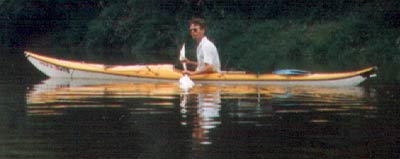
Last Wednesday evening the kayakclub planned a surfsession at the beach near Bakkum. As conditions were good I joined the party because this was an ideal opportunity to paddle the Fjord in surf. Conditions: wind SW 6bft, waves 1,2-1,6m, temp seawater 19°C
Starting just after the high tide, with the sea lowering already, the waves were steep and rather disturbed while coming from several directions and zipping into each other, causing a kind of Clapotis as well.
At first I felt a bit uneasy under this conditions as the Fjord reacted on every wave with a kind of uncontrolled edging. Probably I had to get used to this behaviour of the Fjord as I did not notice this anymore after half an hour.
So after a while I paddled quite relaxed on the edges of whitecaps; mostly without bracing.
- Details
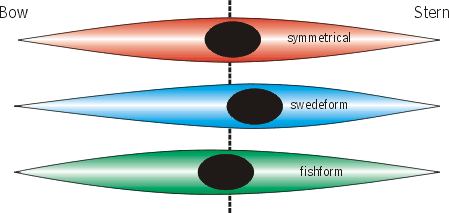
A part of the testing kayaks is examining the design and compare it with the testresults.
Just to try understanding the testresult.
In the testreports on this website you will sometimes read that I noticed the widest part of the kayak being forward of the cockpit.
Every designform has it pro´s and contra´s. Experts consider as a pro of a hull with the widest part of the kayak being forward of the cockpit, that such a kayak is more directional stable.
In my testreports I refer sometimes to this theory.
- Details
I just read on the site of P&H that they invented a new skeg system.
In contrary to other developments in the market, they claim to have followed the path for a simple solution which is also field maintanable.

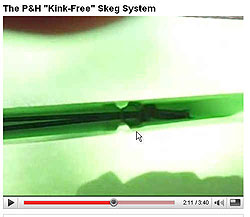
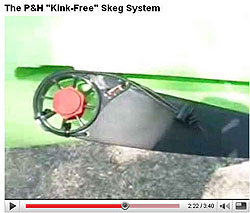
- Details
As you notice the appearance of my seakayakblog is changed.
I just decided to stop regular writing and to specialize on articles about more technical issues. The present technical blogposts will be integrated into my website zeekajaksite.nl
I will keep on using the blogscript for easy writing and uploading of articles to the website.
This way the possibility for readers to discuss, to comment, to add valuable or additional information to articles will be maintained. Although this possibility is not used often, I sometimes recieve feedback; something I highly appreciate.
Besides this the use of the RSS-feed will give readers the opportunity to be informed when new articles are published.
- Details
Last saterday I joined together with Wieger, a tour from the NKB (Dutch Kajak Association) starting in Muiden. Because of the wind the original destination, the "island" Marken, was changed into Durgerdam which was shorter by as well as offering a more convenient course with the wind and last but not least also offering better surfing possibilities on our way back.
Although the area is very familiar to me, there was enough to be seen: 6 kayakers I did not meet before and two trainies practising for becoming an instructor. They practised issues like group-behaviour and paddletechnics on us.
- Details
Circumnavigation of "De Kreupel" at 9 march.
The Dutch have a reputation where it concerns the creating of new land. Normally they create land for human use. This time however they created a forbidden area.
When the shippinglane "Lemmer - Amsterdam" needed some maintenance to make it suitable for bigger ships with less bottom-clearance, they started thinking about what to do with the 3 milj. m3 of sand which would be the result of this operation.

Happily they discovered a shoal in the neighbourhood, named "Kreupel". According to a map from 1568-1573, made by Cristiaan Grootens, this area used to be once an island where fisherman could find some shelter in bad weather. Years later the island disappeared under the waterlevel and was a shoal since.
Click on the map to enlarge
- Details
Een rondje Kreupel
Nederland heeft een reputatie als het gaat om het creëren van nieuw land. Meestal gaat het dan om land dat door mensen in gebruik wordt genomen. Nu is er echter iets gecreëerd dat voor mensen verboden is. Toen de vaargeul Amsterdam-Lemmer moest worden uitgediept heeft men creatief nagedacht over wat er nu met de 3 miljoen m3 zand moest gebeuren welke daarbij vrijkomt Nu wil het geval dat er daar in de buurt een plaatselijke ondiepte, genaamd de Kreupel, is of liever gezegd was. Op een kaart uit 1568- 1573, van Christiaan Grootens, komt de Kreupel al voor als een eiland dat permanent boven water lag. Het bood de vissers bescherming bij slecht weer. Later is de Kreupel onder water verdwenen, maar is altijd een ondiepte gebleven.
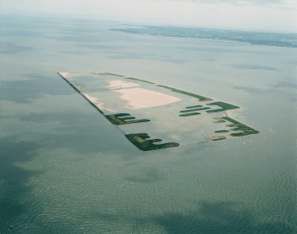
Dat vonden de beleidsmakers een schitterende plek om het zand op te spuiten. Het resultaat van die inspanning zijn 2 zandplaten van 70ha. groot. Dit eilandenrijk is ongeveer 1500 meter lang en 500 meter breed en heeft ook de naam De Kreupel gekregen. De Kreupel bestaat uit twee kale zandplaten waar vogels kunnen broeden, rusten en ruien. Hier omheen ligt een gordel van ondiep water en klei-eilandjes. Om het geheel te beschermen tegen wind en water is er een stortstenen kade omheen gelegd die op enkele plekken onderbroken is voor een goede doorstroming. Aan de buitenzijde van de kade zijn plaatselijk ondieptes gemaakt die dienen als extra golfbreker en voedselbron. Staatsbosbeheer houdt de zandplaten kaal voor vogels en telt de verschillende soorten die er broeden en rusten. Het verdwijnen van de ondiepte zal misschien consequenties hebben voor de IJsselmeervissers die daar hun fuiken plachten uit te zetten. Voor vogels echter is er een waar paradijs ontstaan: sinds het opspuiten in 2002 en 2004 blijkt het een perfecte rust- en broedplaats, dicht bij voedselrijk water, te zijn voor grondbroeders, zoals visdief, dwergstern, kleine plevier en meeuwen. Men zegt al 112 verschillende vogelsoorten te hebben geteld!
- Details
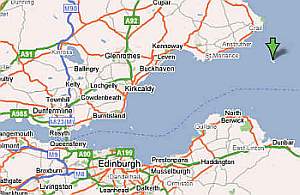
Underneath a report by the Maritime & Coastguard Agency who had been searching for 2 seakayakers. Everything turned out OK in the end. But had the kayakers communicated their plans of camping on the Isle of May (near Edinburgh in Scotland) before leaving, the whole search would not have been necessary.
